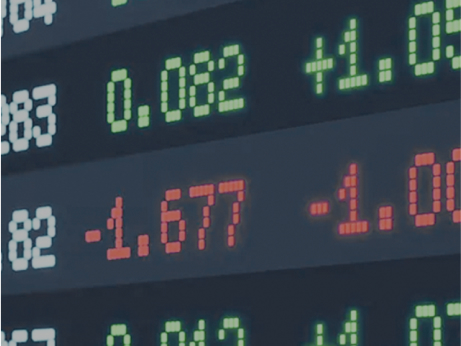Gold can shine even brighter
Gold can shine even brighter
We continue to favour gold, which is an effective hedge against risks of resurgent inflation and concerns of fiscal sustainability. Our 12-month gold target is US$3,100/ounce.
Vasu Menon
Managing Director
Global Wealth Management
OCBC Bank
Oil
We had expected OPEC+ to extend production cuts once again. But OPEC+ surprised markets as delegates from the eight members holding the 2.2 million barrel per day of voluntary cuts announced they would proceed as planned with the unwind starting on 1 April.
The unexpected OPEC+ move signalled a departure from the previous cautious approach that led the group to thrice delay the easing of its output cuts, which have now been in force for over two years. OPEC’s move poses downside risk to oil prices, absent other developments such as lower supply from Iran and Venezuela. Prospects of lower oil prices, however, would align with Trump’s push to lower energy prices. We lower our 12-month Brent forecast to US$70/barrel from US$75/barrel.
In our view, the OPEC+ announcement that it would start unwinding its voluntary cuts looks like a risky decision amid softer US sentiment data, tariff escalation and talk of easing sanctions on Russia. Oil markets have gone back to worrying about demand amid uncertainty fuelled by tariff threats. The uncertainty around trade policy seems to have affected US business and household sentiment. A potential Russia-Ukraine ceasefire that paves way for sanctions relief on Russian energy could also weigh on oil prices.
However, the OPEC+ statement left the door open to adjustments down the line depending on market conditions. It is possible that the unwind of voluntary cuts may not last the full extent. OPEC member states face rising breakeven levels for their oil, putting pressure on their fiscal budgets. The elevated budgetary needs of several OPEC members mean they will continue to favour maximising revenue by supporting oil prices. This is likely to limit the risk of Brent declining significantly below US$70/barrel for a prolonged period.
Precious metals
Gold has been one of the most trending markets this year in addition to the rally in Chinese technology and European defence stocks. We continue to see gold as an effective portfolio hedge and diversifier. We also think gold prices could rise even with a strong US Dollar in 1H25. Our 12-month gold price target is now at US$3,100/oz.
Trump’s tariffs add to stagflation risk i.e. risk of lower growth and higher inflation. The recent string of softer US data has raised questions about the resilience of the US growth outlook. Studies show that gold tends to perform well during stagflation. Gold also does well in other extreme environments like a recession (low growth, low inflation) and when the economy is overheating (high growth, high inflation). Although the term “Goldilocks” has the “gold” word in it, it is not supportive of the yellow metal. A “Goldilocks” scenario is an environment of moderate growth and low inflation.
Concerns over US fiscal sustainability and geopolitical tensions, not helped by the tariff threats, could also drive central banks to buy more gold. China’s central bank expanded its gold reserves for a third month in January, signalling an ongoing commitment to diversify its holdings even with prices at historic highs. Chinese authorities also announced a pilot programme to allow 10 major insurers to invest as much as 1% of their assets in bullion for the first time.
Currency
The US Dollar (USD) was choppy in February, driven by tariff threats and growing doubts about US exceptionalism. The delay in implementing tariffs, the prospect of peace talks in Ukraine, weaker US economic indicators, and a re-rating of Chinese tech stocks (thanks to DeepSeek and Chinese President Xi Jinping’s meeting with private sector business leaders) created a favourable environment for risk assets to recover while the USD retreated. But tariff concerns have yet to go away. The imposition of tariffs can undermine sentiments and lead to spikes in the USD, unless the implementation dates are delayed. We continue to expect two-way trades in the USD in March, driven by tariff uncertainty and fading US exceptionalism.
The Euro’s (EUR’s) recovery in February may have run its course for now. Looming risk of US tariffs on Europe may constraint the EUR’s upside. Markets may also be cautious of a dovish ECB. That said, we have turned neutral on the EUR’s outlook due to recent developments: (i) hope for a Ukraine peace deal – if it materialises, it can lead to supply chain normalisation, lower energy costs, reduce the existing burden on corporates and households and improve sentiments and the growth outlook; (ii) Europeans may try to avert a full-fledged trade war with the US via negotiations. (iii) tentative signs that China’s recovery may start to gain a better footing; (iv) Germany’s determination to form a coalition government fast. Nevertheless, there remains negative drivers that should still restraint the EUR bulls: (i) tariff risks, depending on severity, may weigh on the EUR; (ii) Europe will have to take responsibility for its security and ensure peace in Ukraine, which would mean increasing defence spending – possibly adding to the fiscal burden for most EU nations; (iii) Existing EUR negatives such as stagnation in the Euro-area, and the ECB needing to cut more/ deeper to support growth. Hence two-way trades with a neutral outlook bias seems to be order.
The USD- Japanese Yen (USDJPY) cross continued to trade lower for the month of February. Falling US Treasury yields, hawkish BOJ rhetoric and higher-than-expected CPI prints continue to reinforce the divergence in Fed-BOJ policies. Going into March, we see a confluence of drivers, including Trump’s tariff threats and dividend seasonality trends that may prove “noisy” for the USDJPY. That said, macro drivers remain intact. Prospects of wage growth, broadening services inflation and upbeat economic activities continue to support BOJ policy normalisation. Fed-BOJ policy divergence should continue to underpin the broader direction of travel for the USDJPY to the downside. So, we maintain our bias to sell rallies in the USDJPY should there be a bounce driven by tariff uncertainty or seasonality trends.
The USD- Singapore Dollar (USDSGD) traded lower for most of February before rebounding into month-end. The initial decline was due to the broader decline of the USD and US Treasury yields, while also mirroring strength seen in the JPY, Renminbi and even the EUR. But the recent rebound in the USDSGD was due to a play-up of Trump’s tariff threats, and in part due to softer Singapore CPI figures. The softer CPI print increases the likelihood for MAS to ease monetary policy again at its next MPC meeting in April. Expectations for the MAS to ease can imply that the SGD strength (on trade-weighted terms) should continue to ease, alongside tariff concerns into March-April.
Important information
The information provided herein is intended for general circulation and/or discussion purposes only. It does not take into account the specific investment objectives, financial situation or particular needs of any particular person. The information in this document is not intended to constitute research analysis or recommendation and should not be treated as such.
Without prejudice to the generality of the foregoing, please seek advice from a financial adviser regarding the suitability of any investment product taking into account your specific investment objectives, financial situation or particular needs before you make a commitment to purchase the investment product. In the event that you choose not to seek advice from a financial adviser, you should consider whether the product in question is suitable for you. This does not constitute an offer or solicitation to buy or sell or subscribe for any security or financial instrument or to enter into a transaction or to participate in any particular trading or investment strategy.
The information provided herein may contain projections or other forward looking statement regarding future events or future performance of countries, assets, markets or companies. Actual events or results may differ materially. Past performance figures are not necessarily indicative of future or likely performance. Any reference to any specific company, financial product or asset class in whatever way is used for illustrative purposes only and does not constitute a recommendation on the same. Investments are subject to investment risks, including the possible loss of the principal amount invested.
The Bank, its related companies, their respective directors and/or employees (collectively “Related Persons”) may or might have in the future interests in the investment products or the issuers mentioned herein. Such interests include effecting transactions in such investment products, and providing broking, investment banking and other financial services to such issuers. The Bank and its Related Persons may also be related to, and receive fees from, providers of such investment products.
No representation or warranty whatsoever (including without limitation any representation or warranty as to accuracy, usefulness, adequacy, timeliness or completeness) in respect of any information (including without limitation any statement, figures, opinion, view or estimate) provided herein is given by OCBC Bank and it should not be relied upon as such. OCBC Bank does not undertake an obligation to update the information or to correct any inaccuracy that may become apparent at a later time. All information presented is subject to change without notice. OCBC Bank shall not be responsible or liable for any loss or damage whatsoever arising directly or indirectly howsoever in connection with or as a result of any person acting on any information provided herein.
The contents hereof may not be reproduced or disseminated in whole or in part without OCBC Bank's written consent. The contents are a summary of the investment ideas and recommendations set out in Bank of Singapore and OCBC Bank reports. Please refer to the respective research report for the interest that the entity might have in the investment products and/or issuers of the securities.
Investments are subject to investment risks, including the possible loss of the principal amount invested. The information provided herein may contain projections or other forward-looking statements regarding future events or future performance of countries, assets, markets or companies. Actual events or results may differ materially. Past performance figures, predictions or projections are not necessarily indicative of future or likely performance.
This advertisement has not been reviewed by the Monetary Authority of Singapore.
This document may be translated into the Chinese language. If there is any difference between the English and Chinese versions, the English version will apply.
Foreign Currency disclaimer
- Foreign currency investments or deposits are subject to inherent exchange rate fluctuation that may provide opportunities and risks. Consequently, exchange rate fluctuations may affect the value of your foreign currency investments or deposits.
- Earning on foreign currency investments or deposits may change depending on the exchange rates prevalent at the time of their maturity if you choose to convert.
- Exchange controls may apply to certain foreign currencies from time to time.
- Any pre-termination costs will be taken and deducted from your deposit directly and without notice.
Cross-Border Marketing Disclaimers
OCBC Bank's cross border marketing disclaimers relevant for your country of residence.
Collective Investment Schemes
- A copy of the prospectus of each fund is available and may be obtained from the fund manager or any of its approved distributors. Potential investors should read the prospectus for details on the relevant fund before deciding whether to subscribe for, or purchase units in the fund.
- The value of the units in the funds and the income accruing to the units, if any, may fall or rise. Please refer to the prospectus of the relevant fund for the name of the fund manager and the investment objectives of the fund.
- Investment involves risks. Past performance figures do not reflect future performance.
- Any reference to a company, financial product or asset class is used for illustrative purposes and does not represent our recommendation in any way.
- For funds that are listed on an approved exchange, investors cannot redeem their units of those funds with the manager or may only redeem units with the manager under certain specified conditions. The listing of the units of those funds on any approved exchange does not guarantee a liquid market for the units.
- The indicative distribution rate may not be achieved and is not an indication, forecast, or projection of the future performance of the Fund.
Any opinions or views of third parties expressed in this document are those of the third parties identified, and do not represent views of Oversea-Chinese Banking Corporation Limited (“OCBC Bank”, “us”, “we” or “our”).



